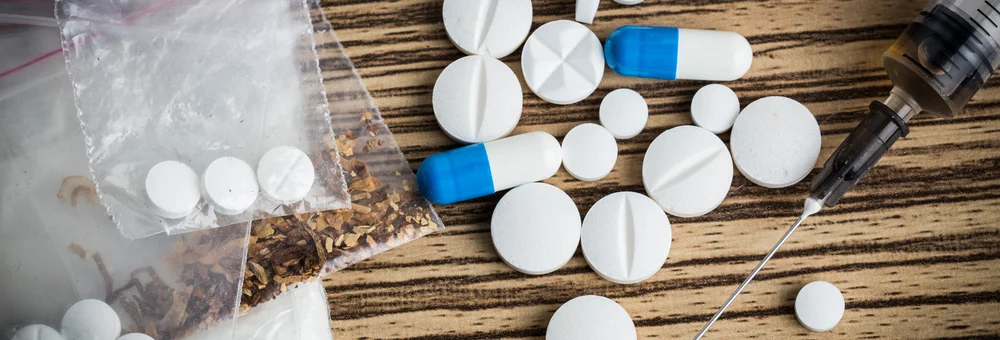
What Are Upper and Downer Drugs?
Legacy Healing Center Blog
Understanding the different types of drugs and their effects is crucial to effectively address substance abuse and ensure comprehensive addiction treatment. The terms upper and downer drugs refer to stimulants and depressants, respectively, and these substances can significantly alter a person’s mental and physical state. Legacy Healing Center explains the effects of downers and uppers while also highlighting some of the important dangers associated with them.
What Are Uppers?
Upper drugs, also known as stimulants, are substances that enhance brain activity, leading to increased alertness, energy, and a sense of euphoria. These drugs are used for various purposes, from legitimate medical treatments to recreational use, and they come with their own set of risks.
- Prescription stimulants like Adderall, Ritalin, and Concerta are commonly prescribed for ADHD and certain sleep disorders. While these medications can be effective when used as prescribed, they are often misused for their stimulating effects, which can lead to dangerous consequences.
- Illegal stimulants, such as cocaine, methamphetamine, and ecstasy, are frequently abused for their intense euphoric effects and the increased energy they provide.
The effects of uppers include heightened alertness, increased heart rate, elevated blood pressure, and a boost in mood. Prolonged use, however, can lead to severe health issues such as cardiovascular problems, anxiety, paranoia, and an increased risk of addiction. Understanding the differences between upper and downer drugs is important if you are suffering from the effects of continual abuse.
What Are Downer Drugs?
In contrast, downer drugs, or depressants, work to slow down brain activity, resulting in relaxation, drowsiness, and sedation. These substances are often prescribed to manage anxiety, insomnia, and other conditions.
- Prescription depressants, including benzodiazepines like Xanax and Valium as well as sleeping aids like Ambien, are commonly used to treat various medical issues. While these medications can be beneficial when used under medical supervision, they are frequently misused, leading to significant risks.
- Illegal depressants, such as heroin and other opioids, cause profound sedation and have a high potential for overdose.
The effects of downers include a slowed heart rate, reduced anxiety, and a sense of calm. Long-term use can lead to serious issues such as memory problems, physical dependence, and an increased risk of overdose. Recognizing these effects and understanding the risks associated with depressants is essential for completely understanding upper and downer drugs as well as the unwanted effects of continued use.
The Risks of Mixing Uppers and Downers
Mixing downer and upper drugs is particularly hazardous. Some individuals combine stimulants and depressants—a practice known as “speedballing”—to counteract the adverse effects of one drug with the stimulating or sedating effects of another. This practice can result in highly unpredictable and dangerous outcomes. For instance, combining an upper drug with a downer can lead to increased strain on the cardiovascular system, unpredictable changes in blood pressure, and heightened risks of overdose.
The combination of these types of drugs can also cause severe confusion in the brain’s signaling, leading to impaired judgment and coordination. The potential for fatal overdose is significantly increased when these substances are mixed, making it crucial for individuals to avoid such dangerous practices and seek professional help.
Signs of Addiction to Uppers and Downers
Identifying the signs of addiction to upper and downer drugs is vital for early intervention and effective treatment.
- Behavioral signs of stimulant addiction include persistent agitation, insomnia, and engaging in risky behaviors, often driven by the heightened energy and euphoria that these drugs induce.
- In contrast, addiction to depressants may manifest as excessive lethargy, frequent sleeping, and confusion, as individuals become increasingly dependent on the sedative effects of these substances.
Physical signs also vary between these drug categories.
- Stimulants can cause weight loss, dilated pupils, and excessive sweating
- Depressants often lead to slurred speech, slowed breathing, and drowsiness.
Psychological symptoms, such as heightened anxiety, paranoia, and mood swings, are common in both types of drug abuse. Recognizing these symptoms can help individuals and their loved ones seek appropriate help from an addiction treatment center.
Treatment Options for Addiction
Effective treatment for addiction to different types of drugs involves comprehensive levels of rehab care that include detoxification, inpatient rehabilitation, and outpatient programs. Centers for substance abuse treatment offer a range of services to support individuals in their recovery journey.
- Inpatient rehabilitation offers a structured environment with 24/7 care, addressing both the physical and psychological aspects of addiction.
- Outpatient programs are available for those who need flexibility or who have completed inpatient treatment.
Additionally, addiction therapy programs, counseling, and support groups play a crucial role in addressing addiction and promoting long-term recovery. For individuals with co-occurring mental health disorders, dual diagnosis treatment is essential, as it provides integrated care to address both addiction and underlying mental health conditions.
Get The Help You Need Today
Understanding the risks and effects associated with upper and downer drugs is crucial for anyone dealing with substance abuse. Recognizing the signs of addiction and knowing the available treatment options can help individuals seek the necessary support at any of our rehab centers nationwide. If you or someone you know is struggling with addiction, get in touch with our experienced treatment team for more information and support. Feel free to read some of our other drug addiction care articles for a deeper look at how our team can help.
FAQs About Uppers and Downers
Related Readings
Debunking Myths About Addiction
